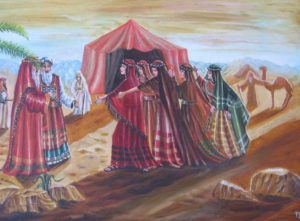This week’s parasha, Vayetze, begins with Jacob’s famous vision of the Heavenly Ladder. This occurred at a place called Beit-El (literally “House of God”), which our Sages identified with the Temple Mount, where the House of God would be built in the future. The Torah makes sure to point out that the place was originally called “Luz” (Genesis 28:19). The same word appears one more time in this week’s parasha, when Jacob stimulates his sheep to produce different spots, and uses luz as a visual cue for them (Genesis 30:37). Rashi comments that luz is a type of nut, and says that in (Old) French it is called “coldre”. The Old French Anglo-Norman Dictionary defines “coldre” as a hazelnut. In Modern Hebrew, egozei luz refers to hazelnuts, too. Alternatively, it may refer to an almond, as the Midrash (Eichah Rabbah 12:5) says:
“…and the almond shall blossom” (Ecclesiastes 12:5) Rabbi Levi says this refers to the luz of the vertebrae. Hadrian (may his bones be crushed and his name blotted out) asked Rabbi Yehoshua ben Chananiah: “From what will man ‘blossom’ in the future?” He replied: “From the luz of the vertebrae.” He said to him: “Prove it to me.” [Rabbi Yehoshua] had one brought; he placed it in water but it did not dissolve; he put it in fire, but it was not burnt; he put it in a mill but it was not ground. He placed it on an anvil and struck it with a hammer; the anvil split and the hammer was broken but all this had no effect on the luz.
The wicked Roman emperor Hadrian (who crushed the Bar Kochva Revolt, during which Rabbi Akiva was executed, among countless others) once questioned Rabbi Yehoshua as to how people could be resurrected in the future if their bodies completely decompose. Rabbi Yehoshua answered that there is a special, tiny, nut-like bone in the human body, along the vertebrae, that is indestructible. From this bone, God will rebuild the entire person. Anatomically-speaking, which bone is this? Continue reading →

